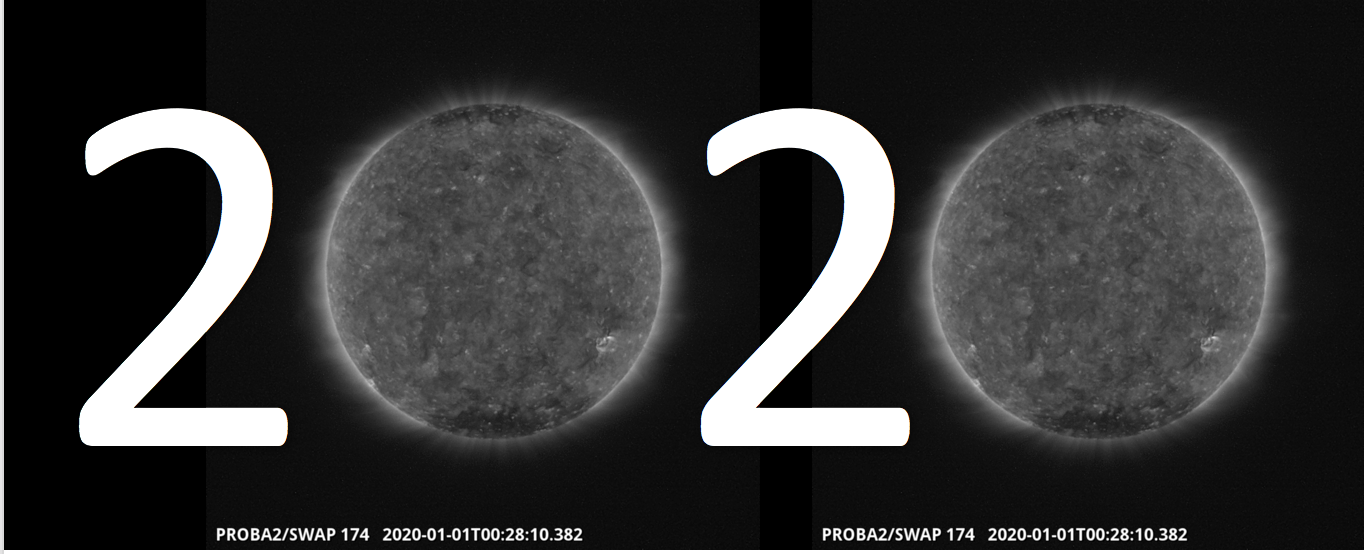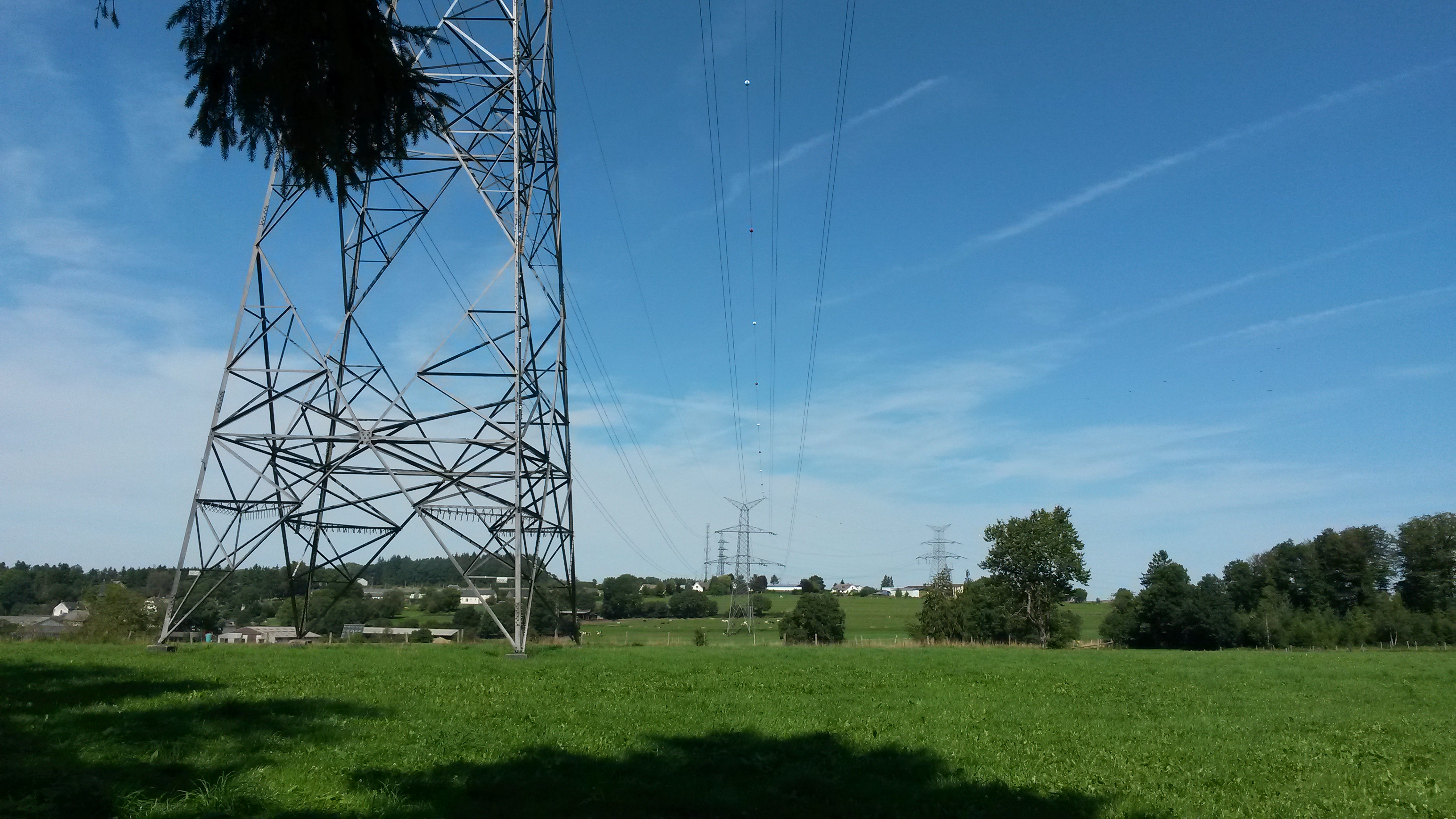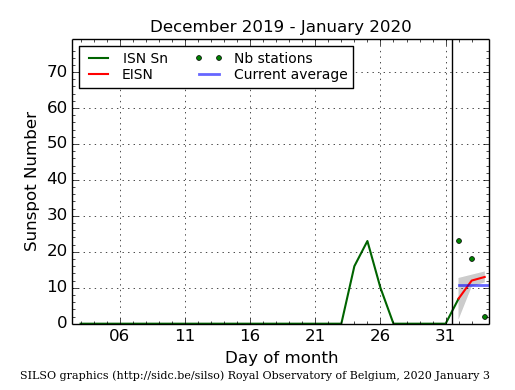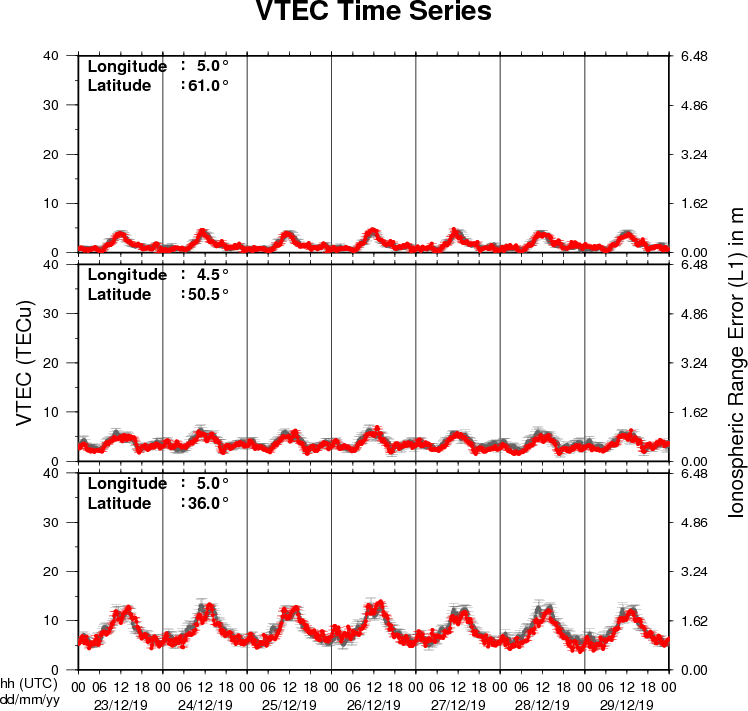- Table of Content
- 1.2020
- 2.A new Topical ...
- 3.Review of sola...
- 4.The Internatio...
- 5.Geomagnetic Ob...
- 6.Review of iono...
2. A new Topical Issue for the SWSC Journal
3. Review of solar and geomagnetic activity
4. The International Sunspot Number by SILSO
5. Geomagnetic Observations at Dourbes
6. Review of ionospheric activity
2020
A new year, sunspots of the new cycle, new space weather challenges, solar orbiter for the first time in space, new projects, ... all 'for the first time'-things.
The STCE wishes you an excellent personal 'for the first time'-series, but also a successful continuation of the 'for the first time in previous years'-series for 2020!

A new Topical Issue for the SWSC Journal
The Journal of Space Weather and Space Climate (JSWSC - https://www.swsc-journal.org) has opened a new Topical Issue entitled "Geomagnetic Storms and Substorms: a Geomagnetically Induced Current perspective", as listed underneath. This Topical Issue intends to collect contributions on Geomagnetically Induced Currents (GICs) during high solar activity (e.g. geomagnetic storms, substorms and storm sudden commencements). It aims to (1) increase the global knowledge about the magnetosphere-ionosphere processes, driven by space weather events, responsible for creating GICs; (2) understand the role played by ionospheric turbulence and ground conductivity in amplifying GICs; and (3) improve the forecasting of GICs.
This Topical Issue arises from the 16th European Space Weather Week held in Liège, Belgium, in November 2019, primarily from the Session 1 entitled "Geomagnetic Storms: a Geomagnetically Induced Current perspective". However, it is not reserved to papers presented during this session and is open for all submissions within the scope.
Questions regarding this topical issue are to be addressed to the topical editor-in-chief Mirko Piersanti (INFN – University of Rome "Tor Vergata", Rome, Italy). For questions concerning the submission process, please contact the Editorial Office at jswsc@edpsciences.org Manuscripts have to be submitted in PDF format via the JSWSC online submission tool before the 30 June 2020 deadline. If you need additional time to complete your submission, please do not hesitate to contact the JSWSC Editorial Office.
Topical Issue: Geomagnetic Storms and Substorms: a Geomagnetically Induced Current perspective
Scope and guidelines: https://www.swsc-journal.org/news
The Topical Editor-in-Chief is Mirko Piersanti (mirko.piersanti(at)roma2.infn.it
Deadline for submission: 30 June 2020

Review of solar and geomagnetic activity
SOLAR ACTIVITY
The Sun was spotless at the beginning of the week. Two active regions belonging to the new solar cycle 25 emerged on December 23-24 and were numbered by NOAA as ARs 2753 and 2754. They reached beta magnetic field configuration but produced no flares. By December 27 the Sun was spotless again.
GEOMAGNETIC ACTIVITY
The Earth was immersed in a slow solar wind with speeds below 450 km/s and with magnetic fields lower than 8 nt. Geomagnetic activity was quiet throughout the week.
The International Sunspot Number by SILSO

The daily Estimated International Sunspot Number (EISN, red curve with shaded error) derived by a simplified method from real-time data from the worldwide SILSO network. It extends the official Sunspot Number from the full processing of the preceding month (green line). The plot shows the last 30 days (about one solar rotation). The horizontal blue line shows the current monthly average, while the green dots give the number of stations included in the calculation of the EISN for each day.
Review of ionospheric activity

The figure shows the time evolution of the Vertical Total Electron Content (VTEC) (in red) during the last week at three locations:
a) in the northern part of Europe(N61°, 5°E)
b) above Brussels(N50.5°, 4.5°E)
c) in the southern part of Europe(N36°, 5°E)
This figure also shows (in grey) the normal ionospheric behaviour expected based on the median VTEC from the 15 previous days.
The VTEC is expressed in TECu (with TECu=10^16 electrons per square meter) and is directly related to the signal propagation delay due to the ionosphere (in figure: delay on GPS L1 frequency).
The Sun's radiation ionizes the Earth's upper atmosphere, the ionosphere, located from about 60km to 1000km above the Earth's surface.The ionization process in the ionosphere produces ions and free electrons. These electrons perturb the propagation of the GNSS (Global Navigation Satellite System) signals by inducing a so-called ionospheric delay.
See http://stce.be/newsletter/GNSS_final.pdf for some more explanations ; for detailed information, see http://gnss.be/ionosphere_tutorial.php
